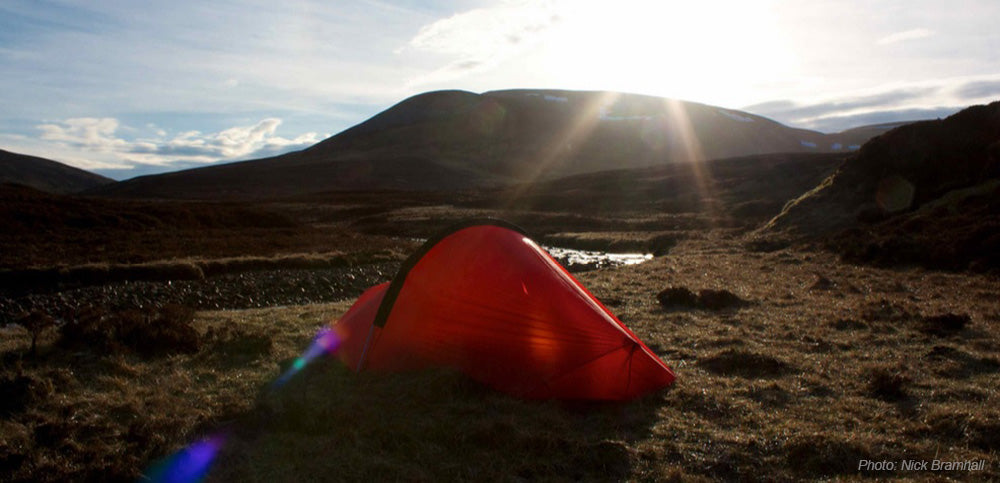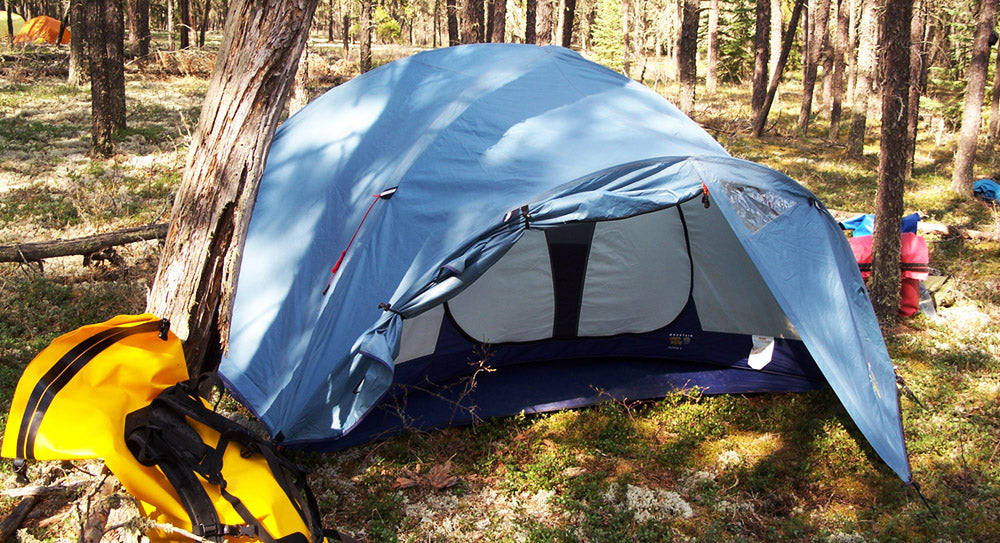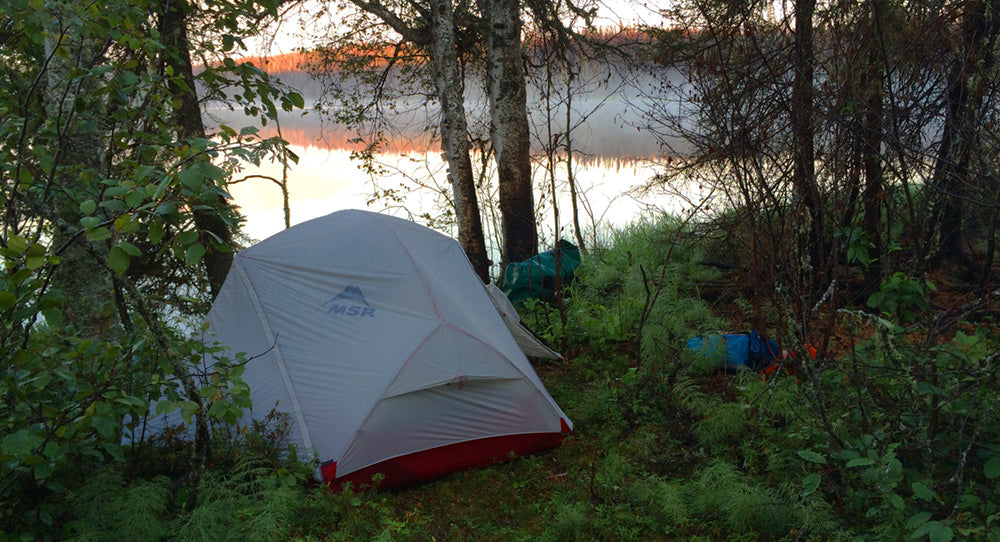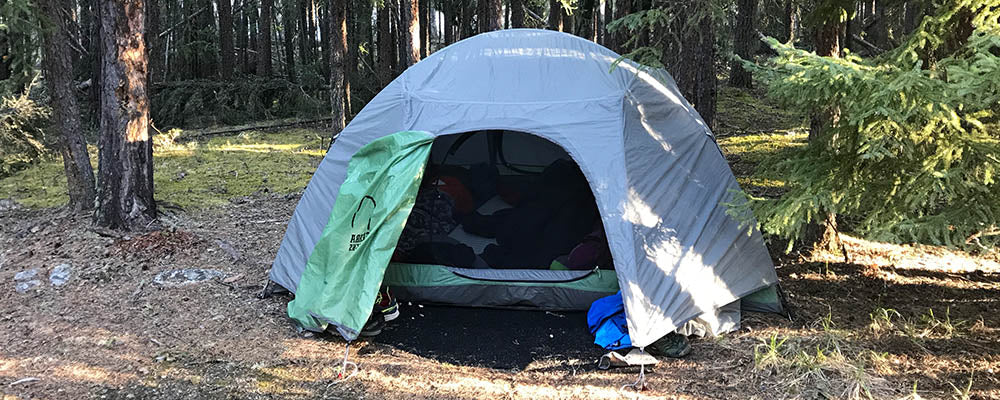Tent buying tips
There are some important things to consider when buying a tent to ensure you get the right one for your needs. A good quality tent will last a long time when cared for properly, so make sure you'll be happy with it!
Function
How do you plan to use your tent? If you're car camping and won't be carrying it far your options are open, so you can go big and cushy if you wish. Schlepping your gear puts a limit on weight and space so most people will go for a smaller, lighter tent if they are backpacking.
Freestanding tents are the most common; these don't need pegs to keep them up. They can be moved around after being erected. Non-freestanding tents can get away with fewer poles so tend to be lighter, but they require pegging out to maintain their form. These are popular with cyclists and minimalists.
Size
Tents are rated by the number of people they sleep. A "three-person" tent will fit three mats without much room in between (if any). This means you're going to be cozy. It's common to buy a size larger than the number of people sleeping in a tent so you have a bit of room for gear, a dog, or personal space.
Be aware that there is no industry standard for tent sizing so comparison between brands can be difficult. It's best to see the tent set up before you buy it, or at least to check the floor dimensions so you can visualize what you're getting.

Seasonality
Most people in our neck of the woods are happy with 3-seasons tents. These typically have a mix of mesh and nylon in the tent body so you have protection from bugs and adequate ventilation for summer, yet they are warm enough for spring and fall camping. They are made to withstand rain and light snow.
4-season tents are made to be warmer, withstand heavier snow loads, and be more stable in wind. The materials are usually more robust and the shapes tend to be more rounded so snow can't accumulate as easily. These tents usually have no mesh but will have ventilation "windows" or tunnels, and the fly comes close to the ground. If used in summer they would be muggy and hot, but their function is to keep you warm and dry in cold, bad weather and they do a good job of that.
Geometry
Tents come in a lot of different shapes. Consider the amount of livable space a tent has and how it is configured. How vertical are the walls? What is the peak height? What is the shape of the floor, and how will sleepers position themselves?
Dome tents are popular because they are stable and strong in wind. A-frame and box styles are usually very affordable but the sidewalls can catch a lot of wind and weather. Wedges (lower at one end than the other) are light and very stable when pitched low end into the wind, but their shape sacrifices head space.

Doors and vestibules
Check how many doors the tent has, so that whoever has to pee in the middle of the night is able to get out without crawling over camp mates. It may be one door near your heads or a door on each side, whatever works.
The rainfly should come down over the door so you are protected as you get in and out. The space it creates in front of the door is called the vestibule, and is a great place to store your boots and wet gear. Some vestibules have a lot more usable room than others. Alternatively, you can purchase vestibule attachments for some models of tents (such as the MSR Gear Shed) if you want extra protected space to do some cooking, for example.

Weight
When you look at tent specs you'll see a few weights listed. The best one to look at for comparisons is the minimum trail weight, which is the tent body, fly, and poles. Packed weight is how much the whole tent weighs when you buy it, including repair kits, pegs, instruction booklets and stuff sack.
A useful guideline when looking at backpacking tents is that they should weigh about 1-3 lbs per sleeper. The very lightweight ones will have fewer features and are usually made of premium materials. Some freestanding tents offer a lightweight setup with just the footprint, poles and fly, but you want to be in a bug-free area to try this. Not all tents include the footprint or have this option, so check it out if this may be something you want.

Rainfly
You want your fly to come down close to the ground, and it should extend below the seam of the bathtub floor. A good tent fly will have a waterproof coating and the seams will be sealed.
It's a good idea to visualize rain falling on your tent. Will it pool anywhere? Where will the excess water run? Look at the dripline and make sure rain won't actually drip inside your tent with the door open.

Poles
Cheaper tents may have fiberglass poles, but these are heavy and break more easily. If you can, go with a tent with aluminum poles. DAC (Dongah Aluminum Corp) poles are a good brand, but there are other quality aluminum poles on the market as well. Anodized poles will minimize rusting, so is a nice feature.

Poles may clip onto the tent or run through sleeves. The sleeves are slightly stronger but the clips are very handy. Some tents have colour coded sleeves or webbing attachment points for ease of setup, another nice feature. Some tents also have velcro tabs under the fly so you can attach it to the poles; this keeps your tent more stable in wind especially if you have used guylines to tie it down.
Pole hubs can make for a good solid set-up, but are not essential in a quality tent.
Ventilation
Double-walled tents use panels of mesh for ventilation. Mesh is lightweight, gives you great views, and helps minimize condensation. The more mesh you have the cooler your tent will be. Single-walled tents will collect more condensation but are lighter and very compact; these are usually mountaineering specific shelters.

Useful tips
- Set your new tent up at home before you first use it! In the dark and rain is not the optimal time to figure it out.
- When breaking down your poles start in the middle, not at one end. This keeps equal tension on the shock cord so it doesn't stretch out over time.
- If your tent doesn't come with a footprint, use a groundsheet (poly works fine) to protect your tent bottom. Make sure it does not extend beyond the tent floor or it will channel the water right in underneath you!
- Use the fly guylines if it's windy. Tying them to trees or simply pegging them out makes a big difference in your tent's stability.
- Placing a square of outdoor carpet in front of the door keeps a lot of dirt out of your tent, if you aren't backpacking. You can cut them to size. A flattened empty drybag works as well.
- String a gear loft or line inside your tent - most will have loops in the ceiling for this purpose. Your small items or wet shirt can hang here overnight.
- When backpacking or kayaking with others you can split the poles and tent body up to spread out the weight and bulk.


Comments
Leave a comment